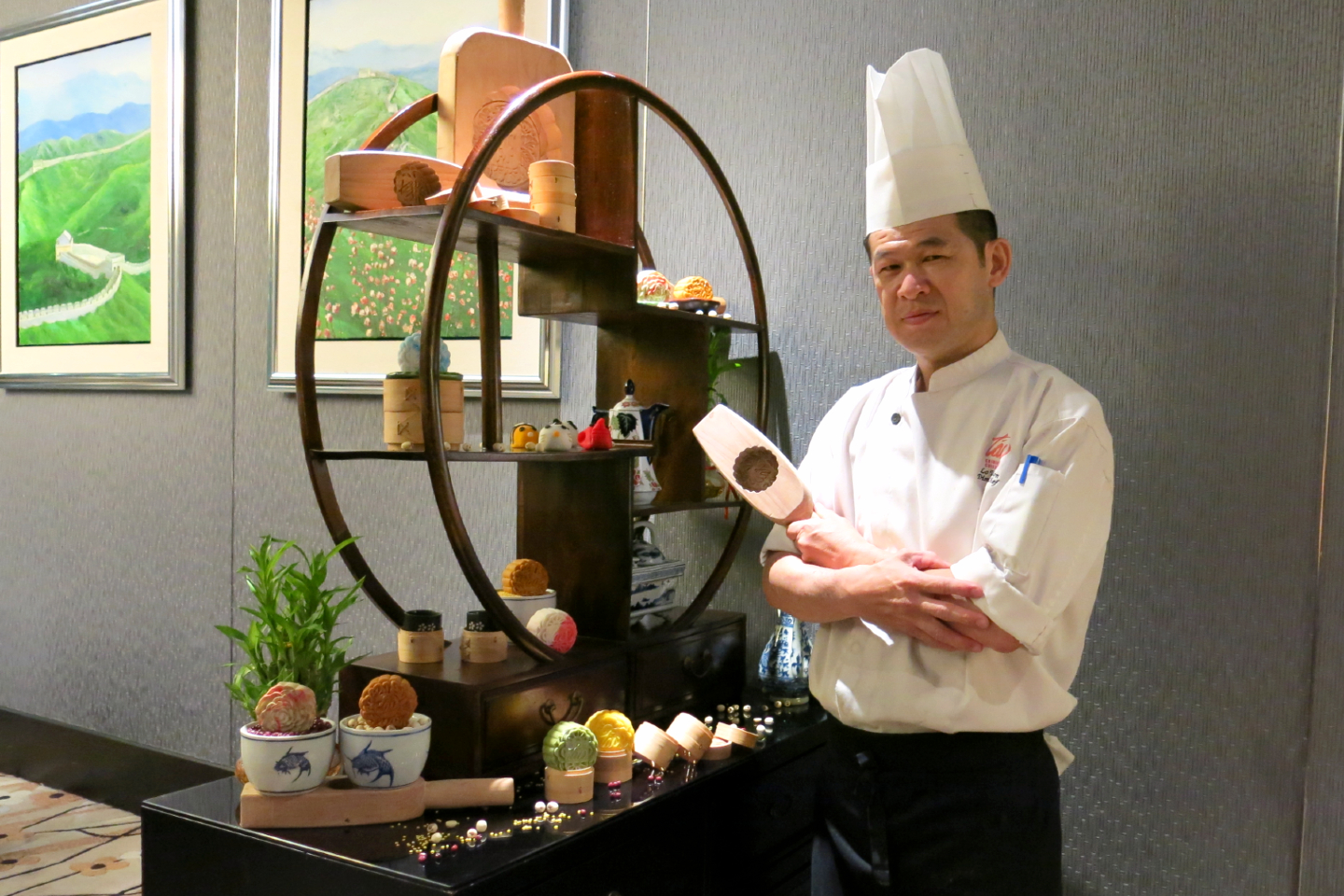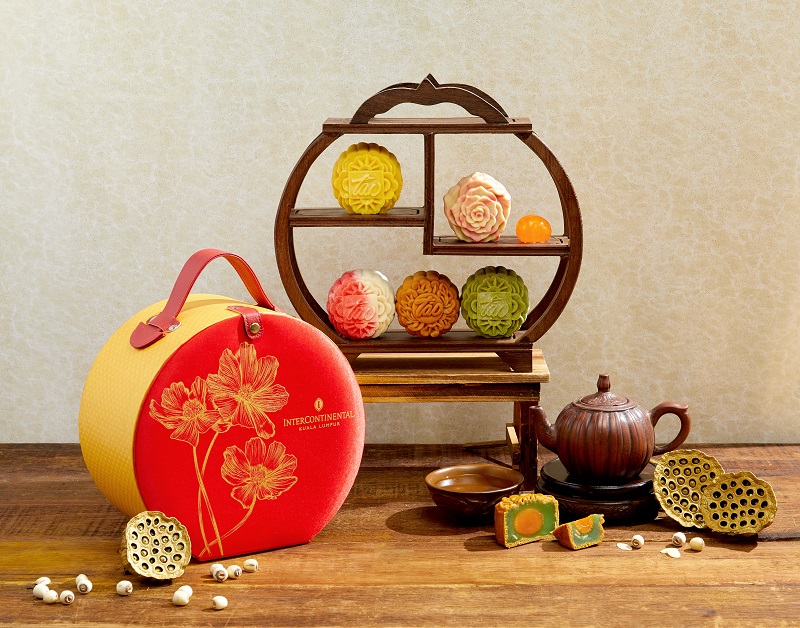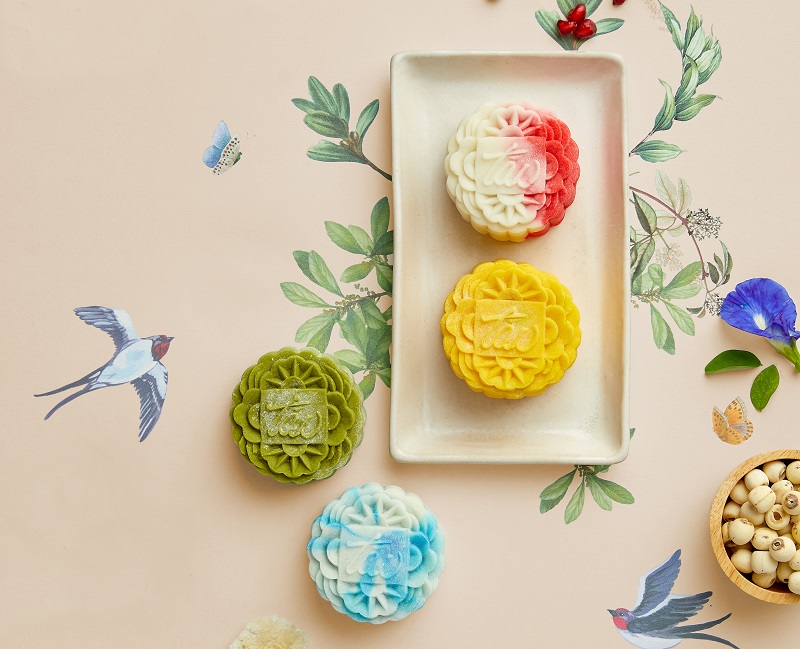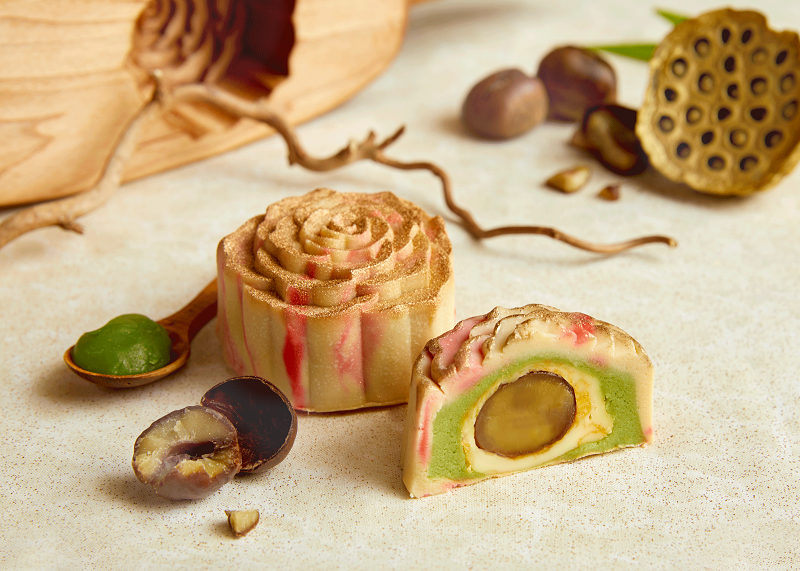
Lo Tian Sion is also Tao’s Chinese Cuisine’s master dim sum chef (Photo: Emily Yap/The Edge)
To celebrate the upcoming Mid-Autumn festival, master dim sum chef Lo Tian Sion from InterContinental KL has crafted a handful of inventive signature mooncakes for the hotel's Mid-Autumn Orient Lustre series, which includes a flower-shaped almond-baked skin mooncake with pandan, almond, cream cheese salted yolk and chestnut. In an interview with Options, he shares some lesser-known facts about the festival staple.
mooncake20193063.jpg

What is the best pairing for mooncakes?
Mooncakes are a form of dessert. It's usually served with Pu-erh tea to offset the fat so it doesn’t feel greasy. In the past, people like to pair their mooncakes with Tie Guan Yin tea for a denser flavour. But now, Pu-erh is preferred because it's much clearer and lighter so you can actually taste the flavours of the mooncake. If you consume mooncakes with an elaborate or overly concentrated tea, it will overpower the flavours.
Tell us about the evolution of mooncakes.
In the past, mooncakes only consisted of one type of filling. If it was lotus, it was wholly lotus and if it was red bean, it was wholly red bean. But as society changed, people realised mooncakes were too fatty and sweet so they incorporated a salty element (salted egg yolk) to balance it out. Traditional mooncakes only consisted of one type of filling but you can find many combinations now.
What about snow skin mooncakes? How did it come about?
Snow skin mooncakes are actually a local invention. It’s uncommon to find snow skin mooncakes overseas. They don’t really know how to appreciate the taste. For us, we have a tropical climate and we enjoy chilled or cold desserts. Combine those two factors and you get the inspiration behind snow skin mooncakes. Now, because word has spread out, Taiwan and Hong Kong are also starting to appreciate it. Before this, many thought the snow skin was mochi, but it’s actually a modified version of it. It’s a different texture altogether. Mochi is more ‘Q’ (chewy), but snow skin is not like that.
mooncake20193103_1.jpg

What’s the right way to eat snow skin mooncakes?
Some people like to eat it directly out of the fridge while others prefer it in room temperature. It’s all about preference, really. If you don’t want it to be so cold, take it out of the fridge, cut it up and let it sit for about 5 minutes before eating. That way, the mooncake will be softer. But there are people who enjoy eating it right out of the fridge.
How should one store their mooncakes if they can’t finish it?
After cutting, you should only keep the mooncakes in the fridge for two days at most. That's because it will dry up very quickly in the fridge and it won't be as tasty.
Any tips for people who want to make their own mooncakes at home?
When you’re making traditional mooncakes, the most important factor is the syrup. You should not make your syrup overly thick. Nowadays, people just use store-bought syrup, and don’t pay attention to its consistency. There are a lot of components that go into a tasty and fragrant mooncake. Many people make it but not many can make it well.
almond_baked_skin_pandan_cream_cheese_salted_yolk_chesnut-.png

How different is your almond-baked skin mooncake different from traditional mooncakes?
It's very different. Traditional mooncakes are made with syrup, mine is made out of finely-ground almond bulbs. People are more health-conscious now, so the market has created healthier alternatives. Our mooncake skin is sugarless. We soak the beans, remove the skin and steam them.
We make everything from scratch. We came up with the idea, experimented and made final adjustments before selling them. The colouring we use for our mooncakes are all natural. For the almond-baked skin mooncake, the reddish hue is extracted from red rice. The blue colouring on the bird’s nest mooncake is from butterfly pea flower and the green from the matcha mooncakes are from Japanese green tea powder. Local and Chinese green tea are not fragrant. It’s only colour and no flavour. We use Japanese green tea so when you eat it, the matcha flavour comes through.
The Orient Lustre series is available until Sept 13 at InterContinental KL hotel’s lobby daily from 11am to 8pm daily and Tao Chinese Cuisine from 11.30am to 2.30pm and 6.30pm to 10.30pm. Prices range from RM30 to RM58 per piece. Order via 03 2782 6128 or email [email protected]. For more, see here.


